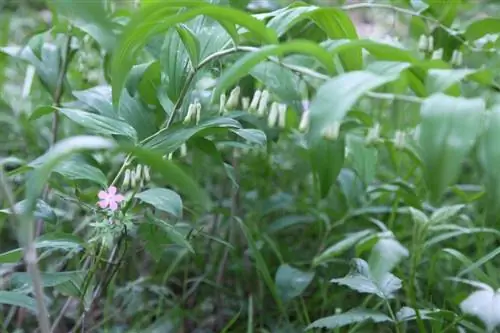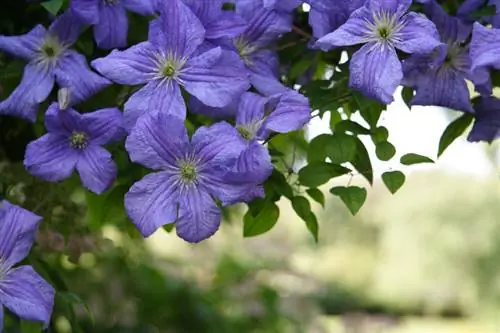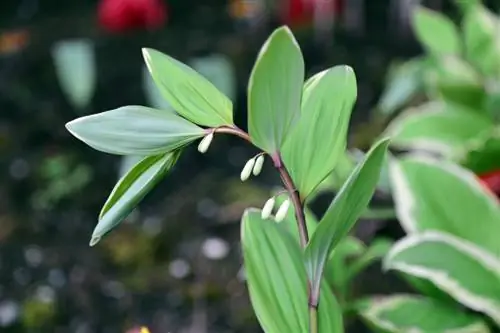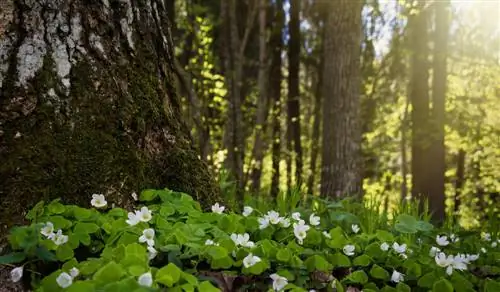- Author admin [email protected].
- Public 2023-12-16 16:46.
- Last modified 2025-01-23 11:20.
Although Solomon's seal is not that rare in nature, it is not very well known as an ornamental plant in the garden due to its somewhat inconspicuous appearance. This plant species scores points with its frugality and the rapid greening of shady garden areas.
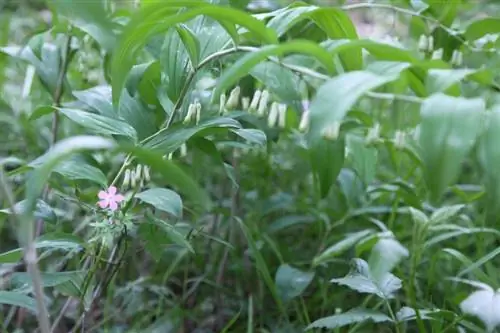
Which location is optimal for the Solomon's seal?
The ideal location for Solomon's seal (Polygonatum odoratum) is a shady or semi-shady area in the garden, preferably with loose, humus-rich and slightly moist to slightly boggy soil. Regular mulching in spring promotes the growth of this undemanding plant.
Subtle spring bloomer for shady locations
The perennial Solomon's seal (Polygonatum odoratum), which is hardy outdoors without any problems, usually grows in nature on the edges of forests, which is why it is also colloquially known as forest whitewort. In spring, bell-shaped flowers and later poisonous berries form on the arched plant stem. Especially in shady and semi-shady perennial beds, Solomon's seal can spread significantly in just a few years through underground runners.
Optimal conditions on loose and moist soil
In contrast to many other garden perennials, Solomon's seal also copes well with slightly loamy and evenly moist to slightly swampy soils. However, the subsoil, like the forest floor in loose mixed deciduous forests, should be as loose and rich in humus as possible. This plant is grateful for regular mulching in spring.
Tip
Since the so-called Solomon's seal sawfly is very loyal to its location, it infests populations in the garden or in nature on an annual basis. Control without chemical aids can be done by cutting out the stems containing eggs or by collecting the visually distinctive caterpillars.

